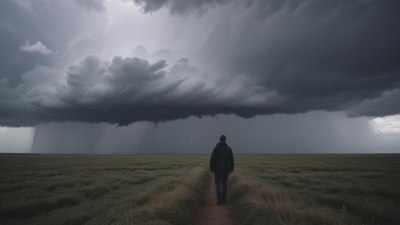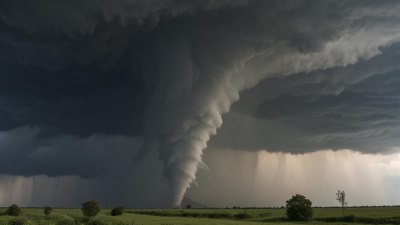Why Winter Makes People Crave Affection More
Explore the psychological and biological reasons behind increased affection cravings during winter months.

Image by syda-productions on Freepik
Winter has traditionally been associated with cold weather, shorter days, and a stillness that permeates the air. As the seasons shift and temperatures drop, many people find themselves longing for connection and affection more than at any other time of year. This phenomenon is not merely a subjective feeling; research suggests there are both psychological and biological explanations for why winter intensifies our desire for warmth—both literally and figuratively.
One of the primary reasons winter amplifies feelings of loneliness and a desire for affection lies deep within our psychological makeup. As the days shorten and sunlight becomes scarce, our mental health can be adversely affected. Seasonal Affective Disorder (SAD), a type of depression that occurs at certain times of the year, particularly in winter, is one prime example. This condition is attributed to changes in light exposure, which affects our body's production of serotonin, a neurotransmitter that helps regulate mood.
Individuals suffering from SAD often report feeling isolated and anxious, making them more susceptible to craving connections, be it in the form of physical affection or emotional support. The lack of sunlight during winter months can lead to feelings of sadness and despair, prompting the body to seek comfort in relationships with others. When we turn to loved ones for affection, it provides a sense of relief from the overpowering feelings of loneliness and sadness brought on by the cold.
Moreover, humans are inherently social creatures. We thrive on social interactions and connections with others. As temperatures drop, outdoor activities tend to become less frequent, and people find themselves staying indoors more often. This can lead to a feeling of confinement, amplifying the desire for interpersonal connections. The cozy indoors can also serve as a perfect backdrop for intimate gatherings, rekindling relationships through shared experiences such as movie nights, holiday celebrations, or simply snuggling up with loved ones by a warm fire.
The Biological Perspective
On a biological level, the winter season influences our bodies in complex ways that can enhance our craving for affection. For example, when temperatures drop, our bodies need to conserve heat. In response, we often become more likely to seek out physical closeness with others as a natural method for increasing body warmth. Cuddling not only helps us physically warm up but also facilitates the release of oxytocin, commonly referred to as the 'love hormone.' This hormone plays a significant role in bonding and forming social connections. Its release can lead to feelings of attachment and affection, amplifying our desire for intimacy during the cold months.
Additionally, winter holidays such as Christmas, Hanukkah, and New Year’s can foster communal sentiments and increase feelings of togetherness. These celebrations often revolve around family and friends, creating an environment where affection is emphasized. During the holidays, it’s typical to experience an increase in social gatherings, hugs, kisses, and gestures of affection. This cultural aspect further solidifies the notion that winter generates a greater need for warmth and connection.
Craving Affection During the Holidays
The winter season brings with it a plethora of holidays that center around affection, gratitude, and togetherness. These celebrations serve to enhance our feelings of connection with family, friends, and romantic partners. During these times of year, the focus tends to shift toward bonding moments—be it exchanging gifts, sharing meals, or simply celebrating each other's presence. The act of gift-giving, for example, is often an expression of love and appreciation, fostering a sense of closeness that is magnified during this time.
Cultural and social expectations around the holidays can also increase our urgency for affection. The narrative that winter is a time for love and connection is prevalent in many cultures. Movies, music, and advertising often depict winter holidays as occasions for romance and cozy family gatherings, further romanticizing the idea of love during this season.
Emotional Repercussions of Winter
Winter doesn’t just bring colder temperatures and snow; it also affects our emotional landscape. The winter blues can manifest as feelings of sadness or anxiety, leading many to seek solace in the arms of others. This pursuit of affection serves as a coping mechanism, offering comfort during a season that can feel harsh and isolating. Our brains instinctively know that connection can mitigate feelings of despair, and therefore, we gravitate toward relationships more than ever.
Furthermore, the cold weather often encourages self-reflection and introspection. Many find that the quiet and stillness of winter leads them to examine their relationships and perhaps realize they’ve been taking affectionate connections for granted. In this introspective state, we may feel a stronger urge to reconnect with loved ones and express feelings we might have kept bottled up over the previous seasons.
Valentine's Day: A Case Study
Valentine's Day is a prime example of how winter influences our need for affection. Celebrated on February 14th, right in the heart of winter, this holiday sees an explosion of romantic gestures. Flowers, chocolates, and heartfelt messages define this day, underscoring the craving for affection that coincides with the coldest month of the year. Businesses capitalize on this desire by promoting products and experiences geared toward fostering intimacy and love, feeding into the idea that winter solidifies our need for affectionate connections.
Interestingly, Valentine's Day also serves as a poignant reminder of the importance of emotional well-being. For those who may feel alone or without a romantic partner, the day can amplify feelings of loneliness, which often strengthens the craving for affectionate gestures or reminders of love, whether from friends, family, or even pets.
Finding Comfort in Animals During Winter
It’s not just romantic and platonic relationships with humans that become more pronounced during winter. Many individuals find solace in the companionship of pets. The act of petting a dog or cat can release oxytocin, reducing feelings of anxiety and enhancing feelings of love and comfort. The presence of a furry friend can provide the warmth and affection that may be harder to find outside during the cold months. Engaging with pets can fulfill our natural longing for affection, proving that relationships don't always have to be human to be nurturing and impactful.
Coping Strategies for Winter
For those who experience deeper feelings of loneliness in winter, it is essential to develop coping strategies to navigate the emotional landscape effectively. Reaching out to friends and family, even through virtual means, can be a great way to combat isolation. Participating in community events, whether in-person or virtually, can also provide opportunities to foster connections during the colder months. Exercising and spending time in nature can lift our spirits and promote a greater sense of well-being, which can indirectly enhance our desire for connection and affection.
Additionally, nurturing yourself is crucial. Engaging in self-care activities such as reading, cooking, or practicing mindfulness can improve emotional resilience and create feelings of warmth and love from within. Investing time in hobbies can provide an emotional outlet that may become especially important during the more isolating winter months.
In conclusion, winter undeniably exerts a profound influence on our cravings for affection. The combination of biological instincts, cultural narratives, emotional experiences, and societal contexts creates a fertile ground for seeking love and connection. As the world outside becomes colder and quieter, our minds and hearts drive us to search for warmth in our relationships. Understanding these underlying mechanisms can help us navigate our emotional landscape more effectively and foster deeper connections with those we cherish during winter.











